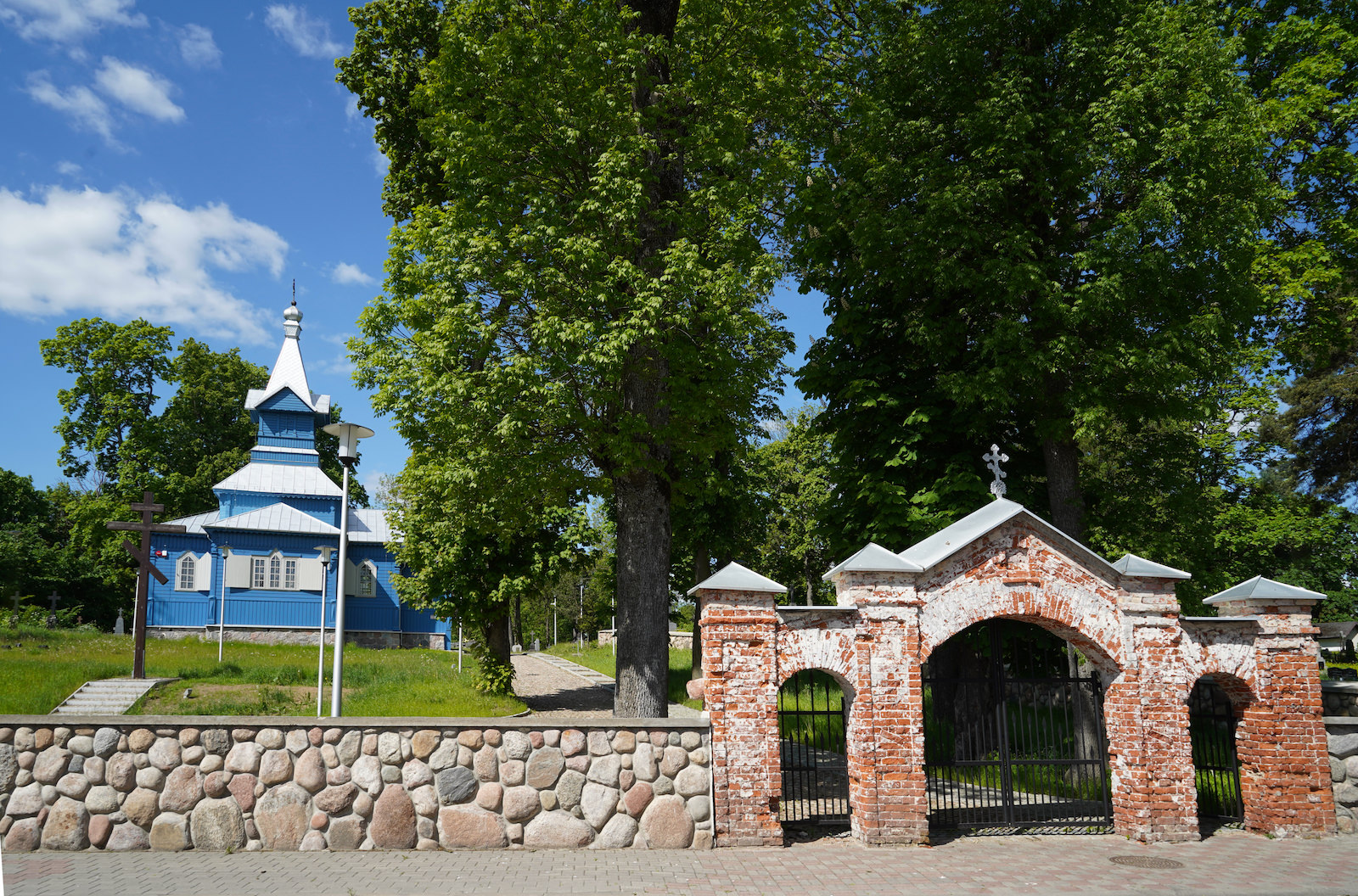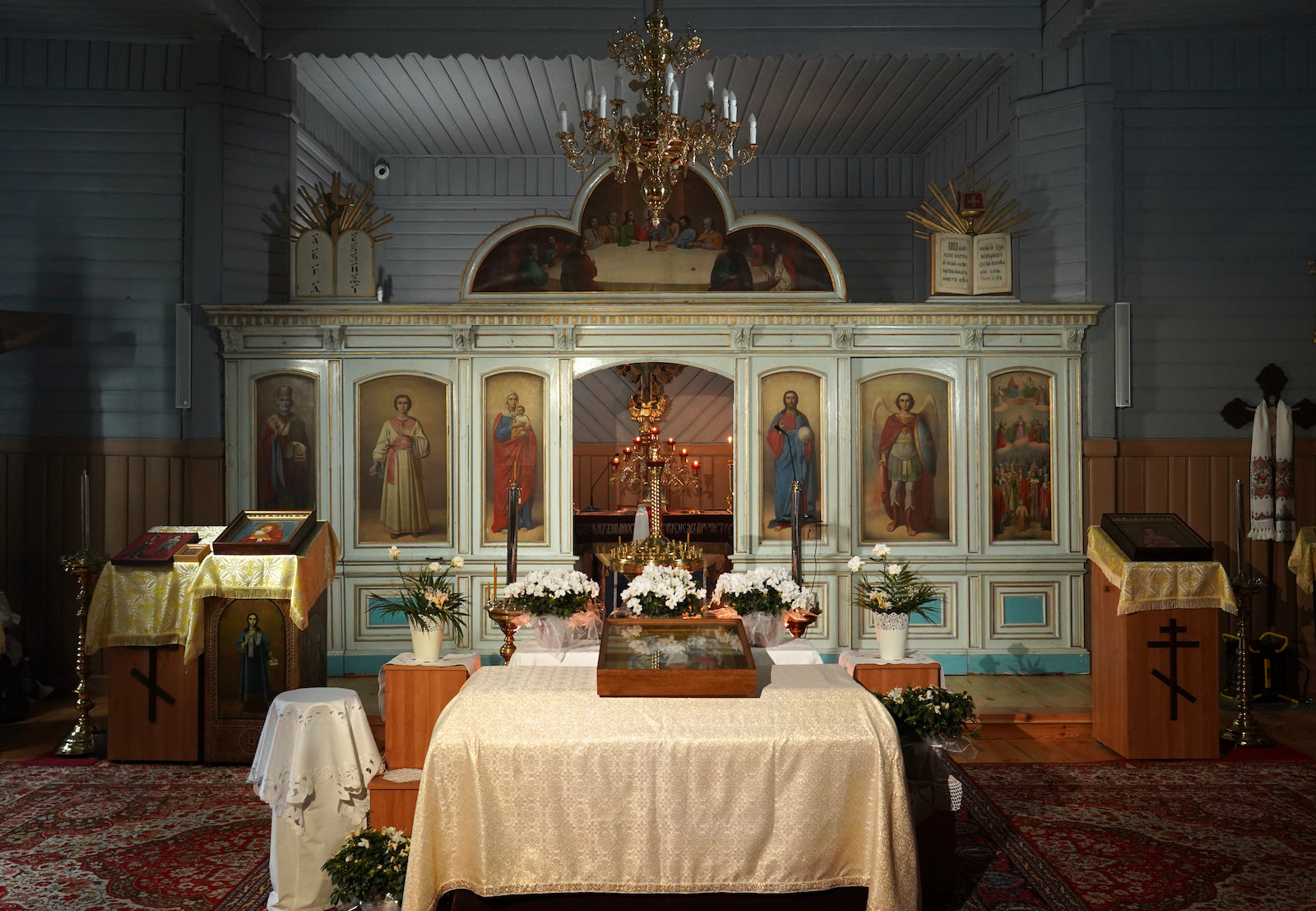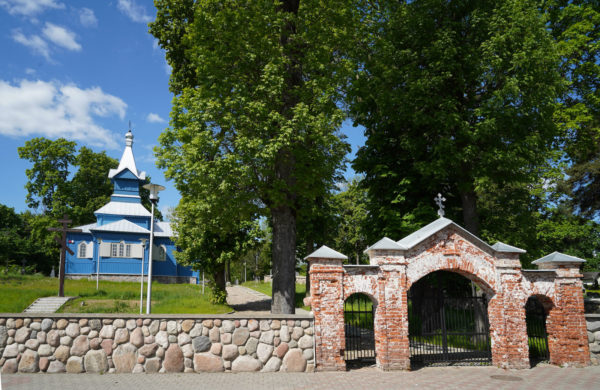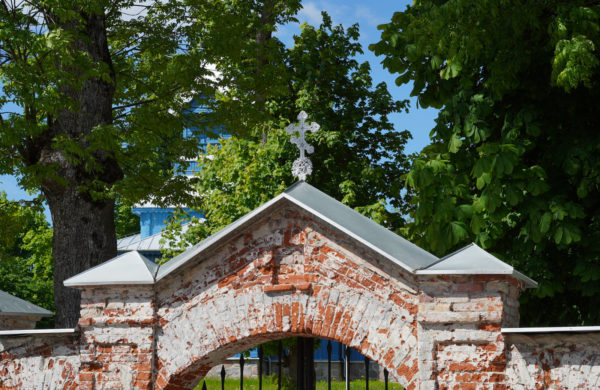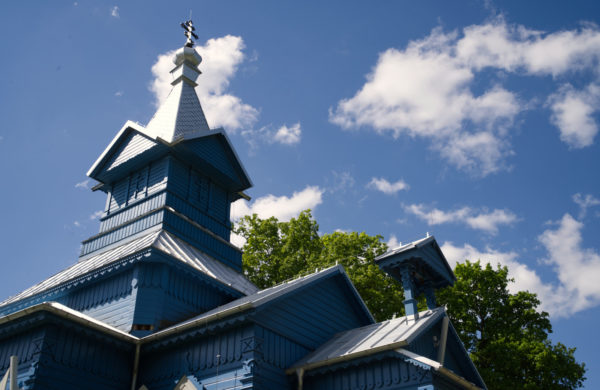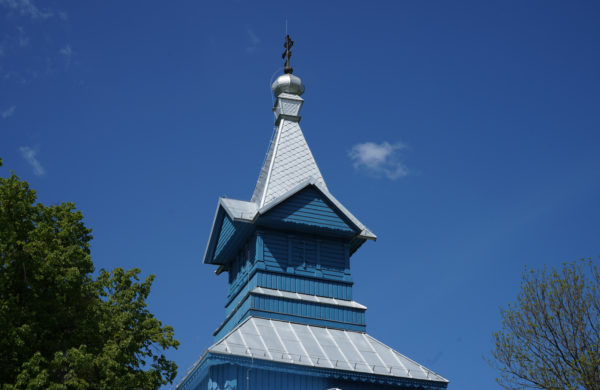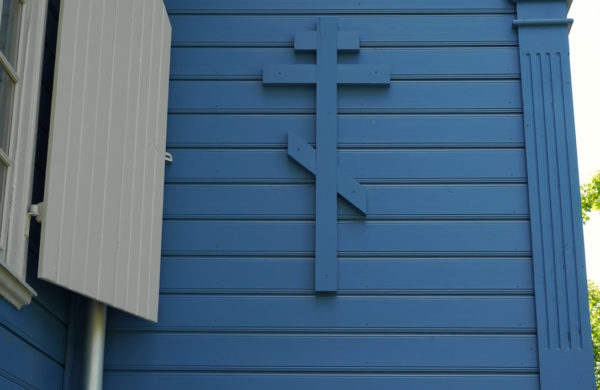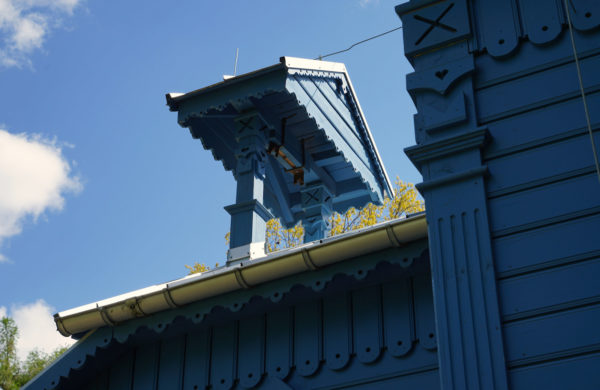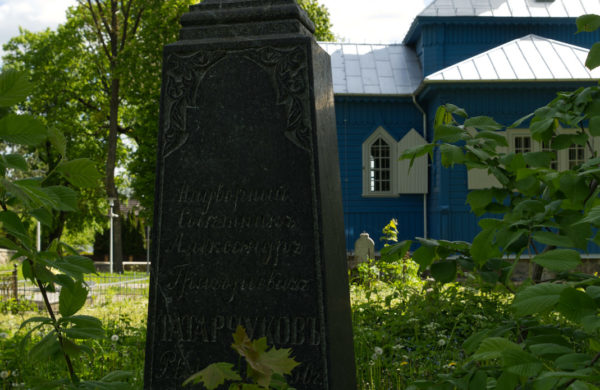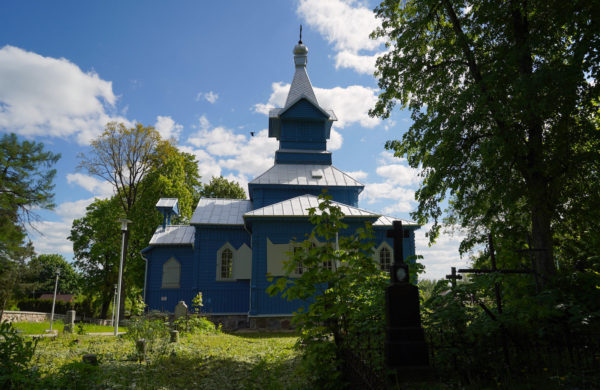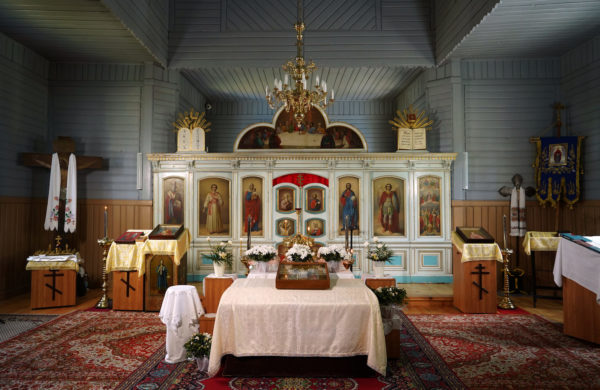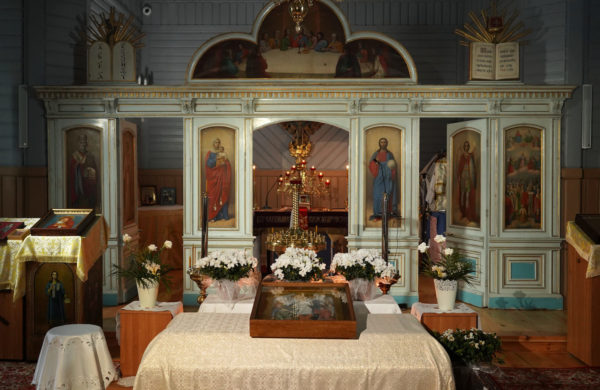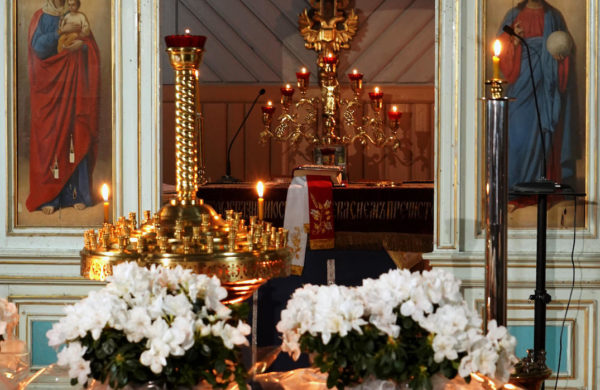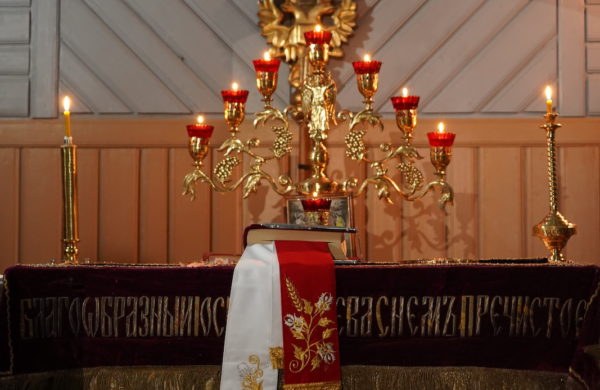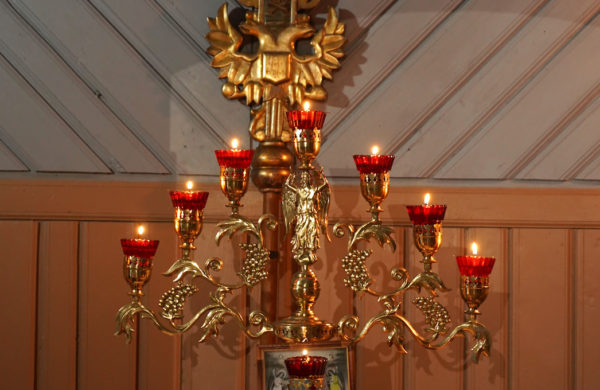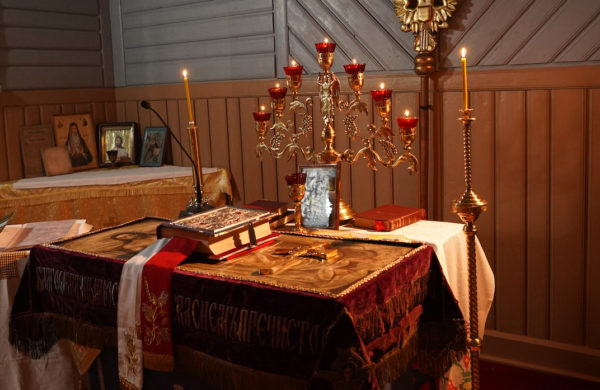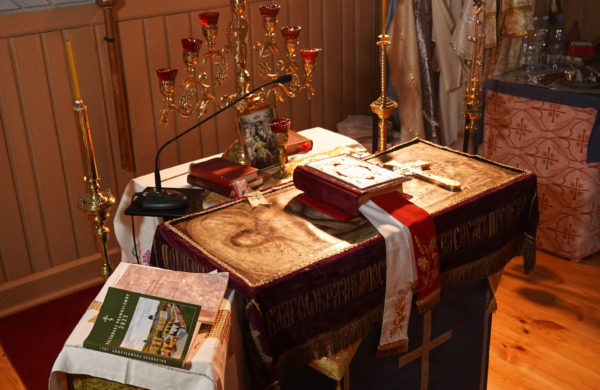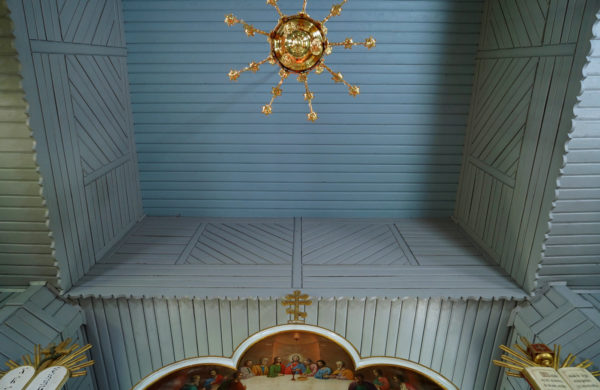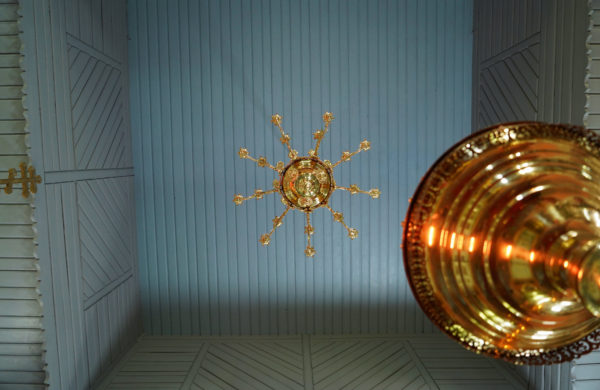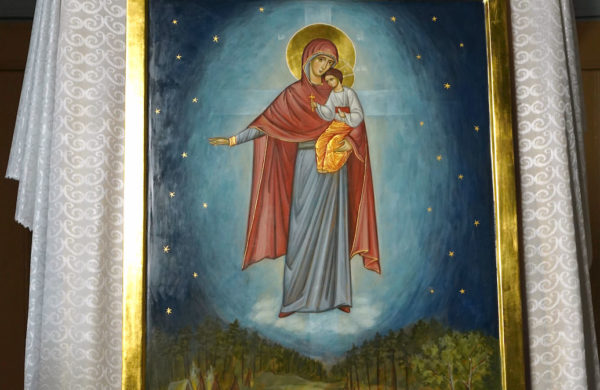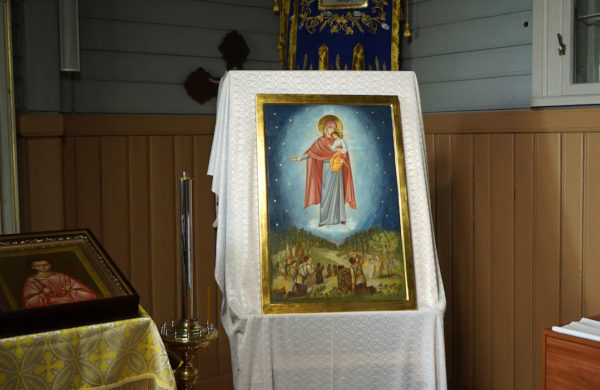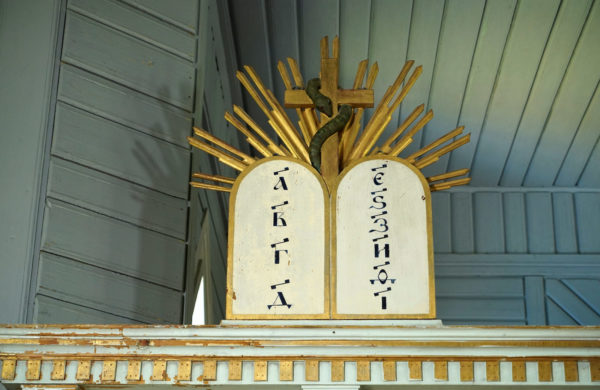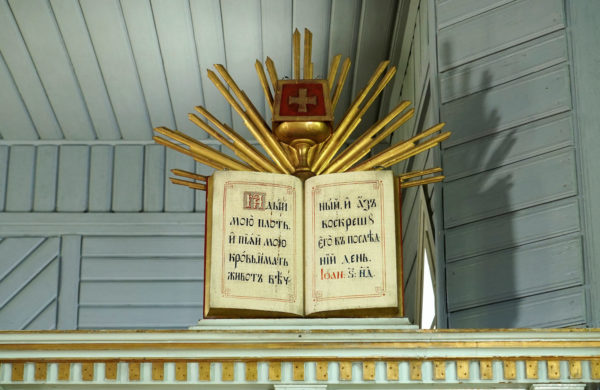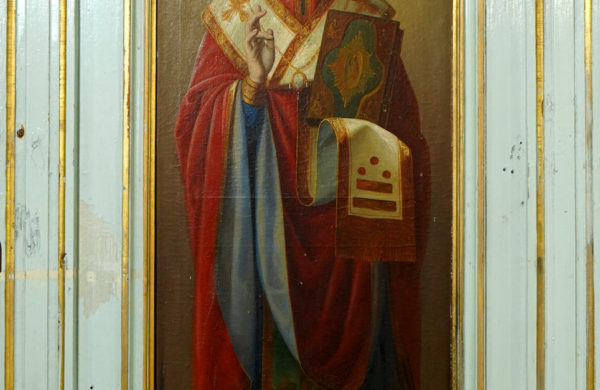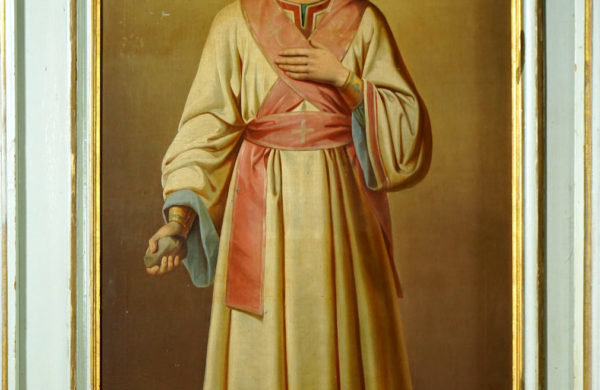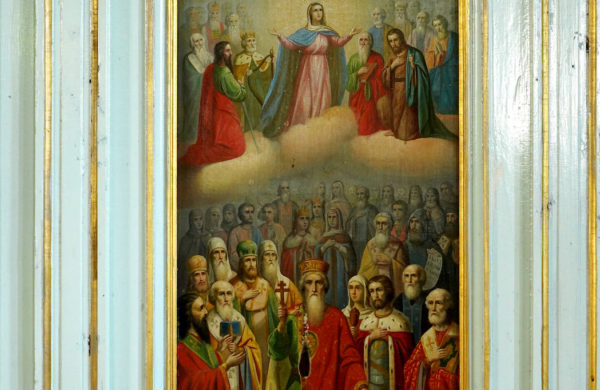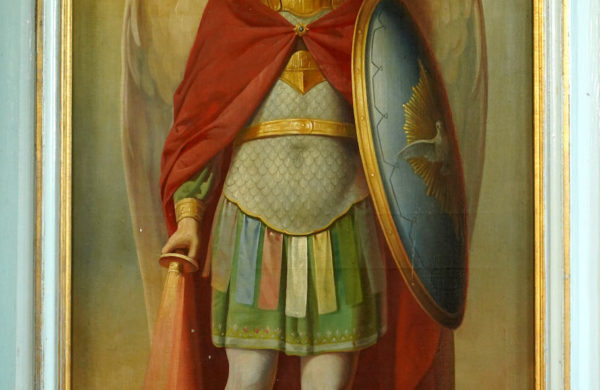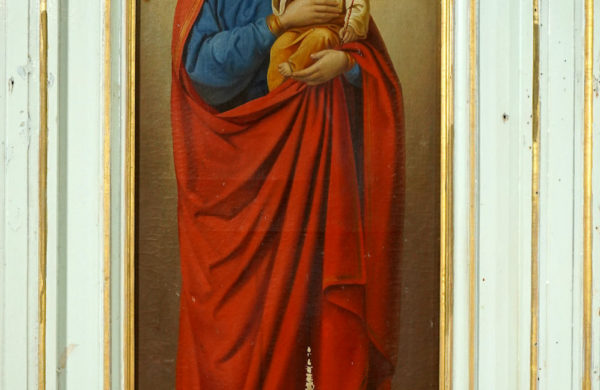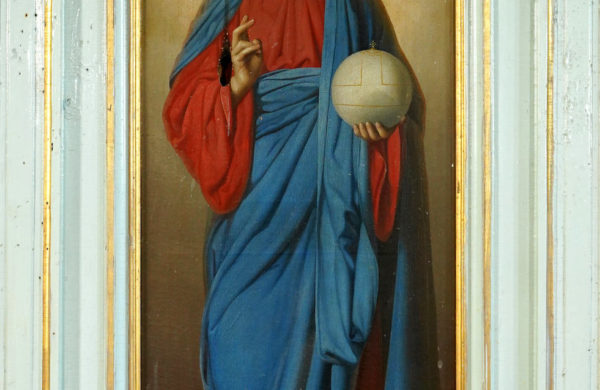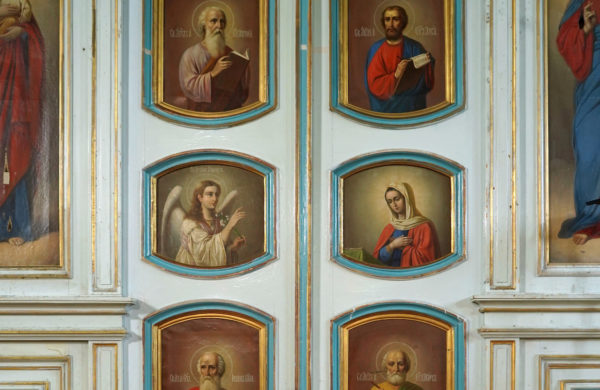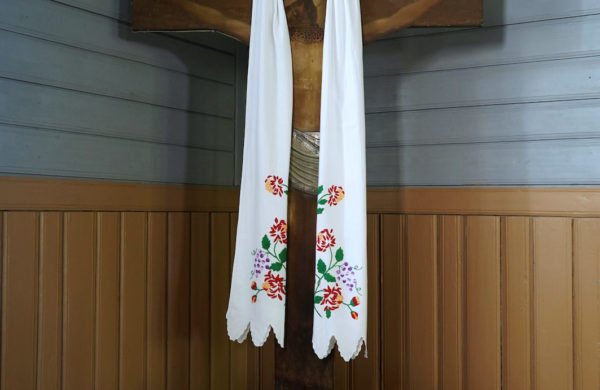Church of All Saints
Locality
The parish church of All Saints in Suwalki belongs to the Bialystok deanery of the Orthodox Diocese of Bialystok-Gdansk. It is located in the Suwalki Orthodox cemetery.
History
The Church of All Saints was concercrated in 1892. At that time, it served as a cemetery chapel. In 1940, due to the destruction of the brick temple of St. George, the seat of the parish was moved here.
Wodden
The church is oriented, built on the plan of a Greek cross in the Russian style. It is a wooden building, log structure, formwork. The side arms and the chancel are closed rectangular.
At the beginning of the twentieth century, there were as many as four Orthodox churches in Suwalki. The largest of them have survived to this day as Roman Catholic churches.
Virtual tour
We have prepared some practical multimedia materials, which we hope will bring closer to these beautiful historic Polish Orthodox churches. Watching an introductory video with comments from the guide and spiritual guardian of the temple, decorated with moody Church chants, you can emphasize with its atmosphere. Going on a virtual tour, which includes 360 panoramic photos, you can quite imagine yourself inside the temple. For active tourists we have prepared a proposal for a cycling route. We invite you to a virtual tour of the orthodox church, and in the future to visit it in person.
INTRODUCTION
The beginnings of Orthodoxy in the Suwalki region date back to the first half of the nineteenth century. To Suwalki, which was to become the capital of the Augustow Governorate of the Kingdom of Poland, many Orthodox Russians came at that time, tsarist officials, military, as well as scholars. In 1837, a new governorate was established with the capital in Suwalki. In the same year, on the initiative of the Main Director – Eugene Golovin, the construction of the first Orthodox temple in the city began.
ORTHODOX TEMPLES IN SUWALKI
Church of the Dormition of the Theotokos
The first Suwalki orthodox church – the Dormition of the Theotokos, located in the very center of the city, was consecrated in 1840. From 1869 it had the status of a cathedral. In 1915, most of Orthodox Russians living in Suwalki, in the face of advancing German troops, was evacuated deep into the Empire. Liturgical life in this church has come to a standstill. After Poland regained independence, the temple was handed over to the Roman Catholic Church. In the following years, significant architectural changes were made in it. As the church of the Sacred Heart of Jesus, the church has been preserved to this day.
Church of St. George the Victorious
In the years 1900-1902, near the Suwalki railway station, a regimental, brick church of St. George the Victorious was erected for the needs of the army. The funds came from the collection, and two thousand rubles for its construction were donated by St. John of Kronstadt. After World War I, the church turned into a warehouse of materials and was devastated. In 1923, the church regained by the Orthodox community was renovated and had the status of a parish until 1940, when as a result of hostilities it fell into disrepair.
In the 60s of the twentieth century, the remains of its walls were demolished.
Church of St. Alexander Nevsky
At the beginning of the twentieth century, there was a need to build another, free-standing temple for the needs of the army. In 1900, on the outskirts of the city, the construction of a new, large, brick three-nave basilica began, which was consecrated 7 years later. The church had two altars: the main one of St. Alexander Nevsky and the side altar of St. John the Baptist. After Poland regained independence, the church was taken over by the Roman Catholic Church.
At that time, a number of significant changes were made in its architecture. As the church of the Holy Apostles Peter and Paul, the church has survived to this day.
HISTORY OF THE PRESENT CHURCH
Another Orthodox church in Suwalki, which has survived to our times, is the Church of All Saints, located at the Cemetery of the Seven Denominations.
The Orthodox part of the necropolis hides many historic nineteenth-century beautiful tombstones, belonging to the Orthodox Russians who lived in Suwalki at that time.
Unfortunately, not preserved, almost all of them fell into disrepair.
The Church of All Saints was consecrated in 1892 and served as a cemetery chapel at that time. Funds for its construction came from the collection.
In 1940, due to the destruction of the brick temple of St. George, the seat of the parish was moved here. And so it is to this day.
After the war, the temple was robbed several times, windows were broken, books for services, Eucharistic utensils and other valuable items were stolen.
Therefore, the church required constant repairs. Its first significant renovation took place in the years 1976-1979. Already in the twenty-first century, in the years 2013-2014, another renovation began. The shuttering of the tower was replaced, as well as the covering of part of the roofs and the dome.
In 2021, thanks to funds from the European Union, it was possible to complete the comprehensive restoration of this historic temple, both inside and outside.
ARCHITECTURE
It is a wooden building, log structure, formwork. The church is oriented, built on the plan of a Greek cross in the Russian style. The side arms and chancel are closed rectangular. At the intersection of the arms of the cross there is a high four-sided turret, covered with a tin pyramidal tent roof. It is crowned with an onion dome with an Orthodox eight-pointed cross.
To the nave from the west side adjoins the pritwor (narthex), i.e. the vestibule, over which a small pillar belfry was located.
In 2003, the church was entered into the register of monuments.
INTERIOR
The modest interior of the church is covered with a flat ceiling, which at the intersection of the arms of the cross raised upwards creates an apparent dome. Inside the temple, attention is drawn to a single-row iconostasis in the academic style, with icons from the Moscow studio of Potapov.
Worth special attention
When visiting the Suwalki Orthodox church, but also the necropolis, it is worth paying attention to:
- Nineteenth century two-row iconostasis
- unique lectern with icons
- a ceiling cross with the initials and coat of arms of Tsar Alexander III
- Augustow Icon of the Theotokos – new, but especially venerated by Suwalki parishioners
- in the cemetery there are many nineteenth-century historic tombstones.
Virtual tour
Cycling route
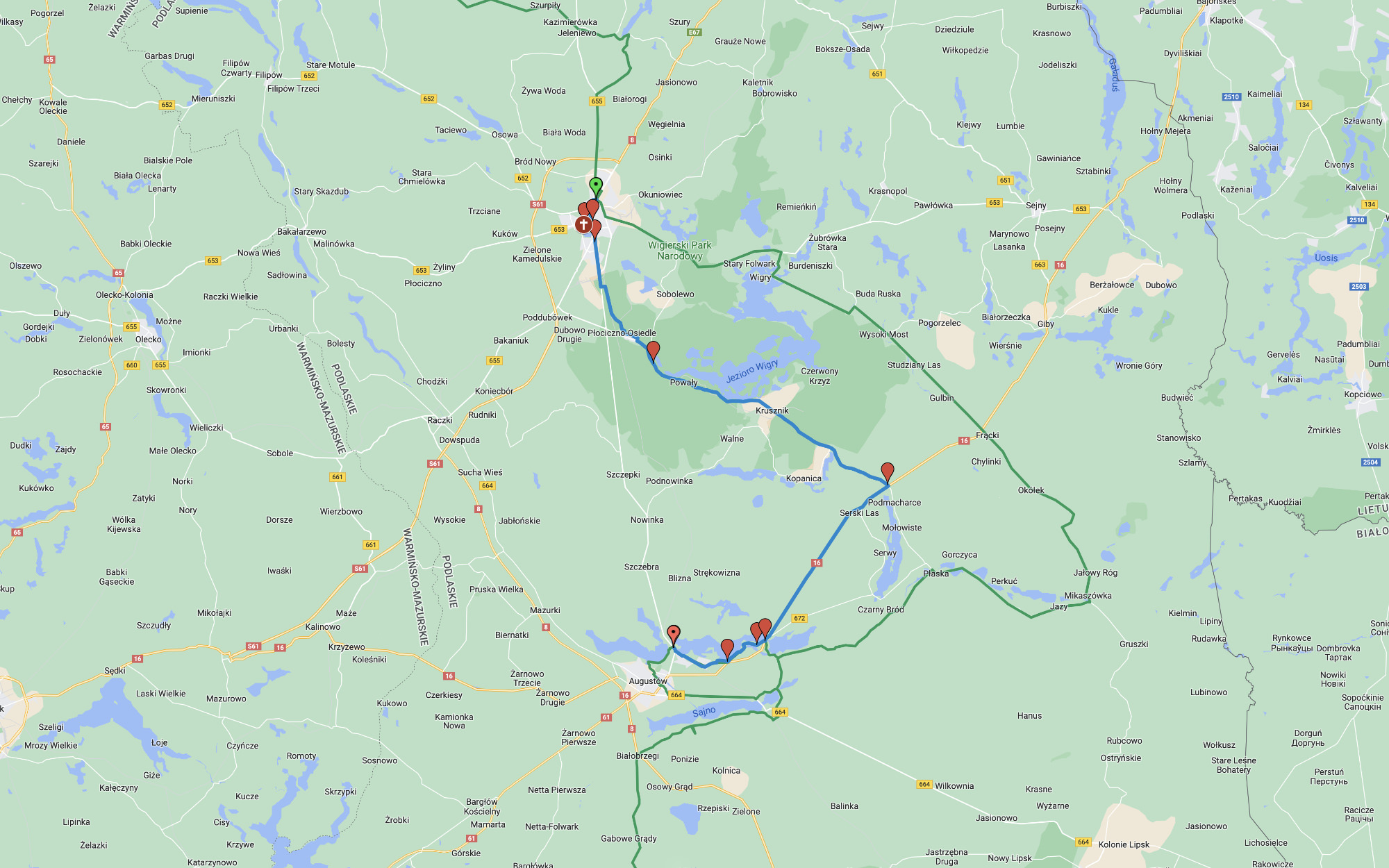
Here is a proposal for a cycling route for active tourists. To use it, download the file to your computer by clicking the button on the left, unzip it, load the file .gpx on any GPS device for navigation… and off you go. We wish you a successful and fruitful journey.

